
The alarm goes off, and it feels less like a gentle nudge and more like a punch to the gut. You drag yourself out of bed, shrouded in a fog that coffee can’t seem to cut through. The energy just isn’t there. The drive feels… distant. You look in the mirror and wonder, “Is this it? Is this just what getting older feels like?”
I’m here to tell you it’s not. And you’re not alone in feeling this way.
For a lot of guys, the first few hours of the day feel like a battle we’re losing before it even starts. We’ve been told it’s just stress, or lack of sleep, or maybe we’re just not “morning people.” But what if it’s something deeper? What if your morning routine is actively working against your own biology?
Here’s the deal: your body is a machine that runs on a very specific 24-hour clock, powered by hormones. And for men, two of the biggest players in this daily drama are testosterone and cortisol.
Think of testosterone as your engine—it’s what gives you drive, vitality, and the power to build and maintain muscle. Cortisol, on the other hand, is your ignition and your emergency brake. It’s the “stress hormone” that gets you alert and moving, but when it’s stuck in the “on” position, it grinds everything else to a halt.
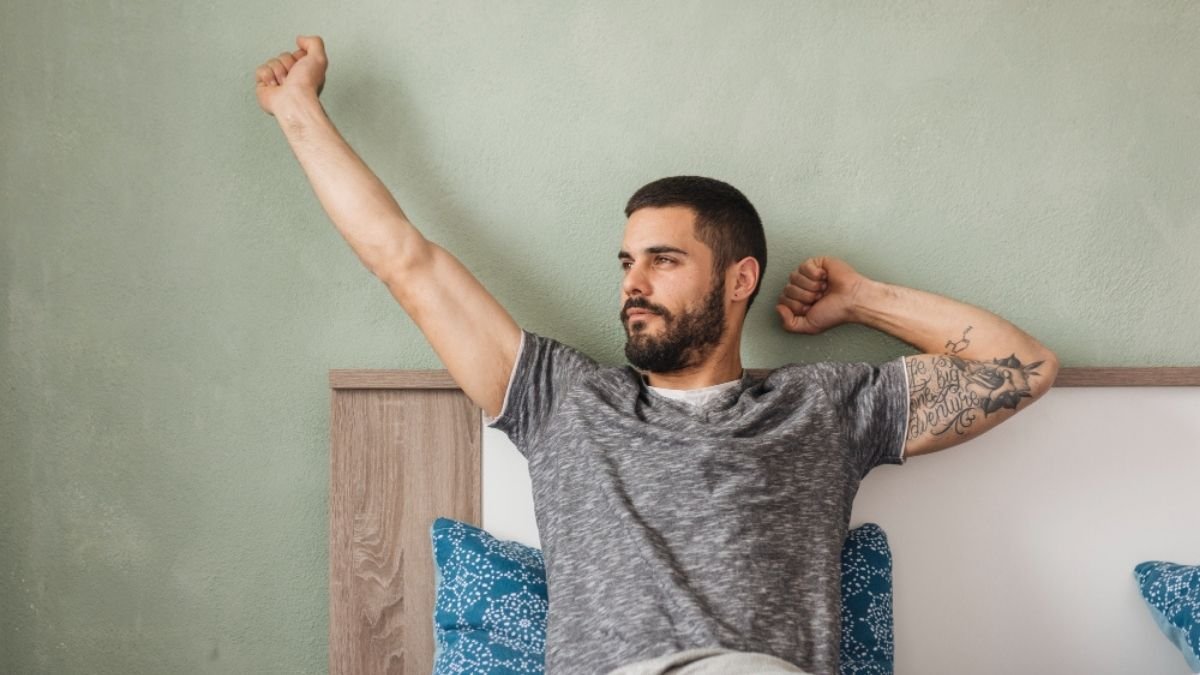
Both of these hormones naturally hit their peak in the morning. Testosterone builds up while you sleep, getting you ready for the day. And right when you wake up, your body releases a healthy, helpful spike of cortisol to pull you out of sleep and get you alert.
The problem is, our modern lives are a mess of signals that throw this delicate dance into chaos. And here’s the kicker: when cortisol is chronically high, it actively slams the brakes on testosterone production. It’s a biological tug-of-war, and most of our default morning habits help cortisol win.
But what if you could rig the game?
What follows isn’t just a list of wellness tips. It’s a playbook of 11 simple, evidence-based “wins” you can stack in your morning to work with your body’s natural rhythm. Each one is designed to do one of two things: support your natural testosterone peak or manage your cortisol response so it doesn’t sabotage you.
This is about engineering a better morning. A morning that builds you up instead of breaking you down. A morning that sets the tone for a day of energy, focus, and vitality. Let’s get started.
Win #1: Stop Living in a Cave. Get Some Sunlight.

This is the big one. Honestly, if you only do one thing on this list, make it this.
Light is the master switch for your body’s internal clock. Getting sunlight in your eyes first thing in the morning is like hitting the master “sync” button for your entire operating system. It’s not a passive thing; it’s a direct biological command that tells your brain, “The day has officially begun.”
Here’s how it works, without the boring textbook jargon:
You have these special cells in your eyes that aren’t for seeing shapes or colors. Their only job is to detect the brightness and quality of light and send a direct message to the master clock in your brain, an area called the suprachiasmatic nucleus (SCN).
When that morning light hits, the SCN starts a cascade of events. First, it triggers that healthy cortisol spike we talked about, which helps you shake off grogginess and feel alert. Think of it as your body’s own clean-burning stimulant. It also starts a countdown timer. About 14 to 16 hours later, your brain will get the signal to release melatonin, the hormone that makes you sleepy, setting you up for a great night’s rest.
So, what does this have to do with testosterone?
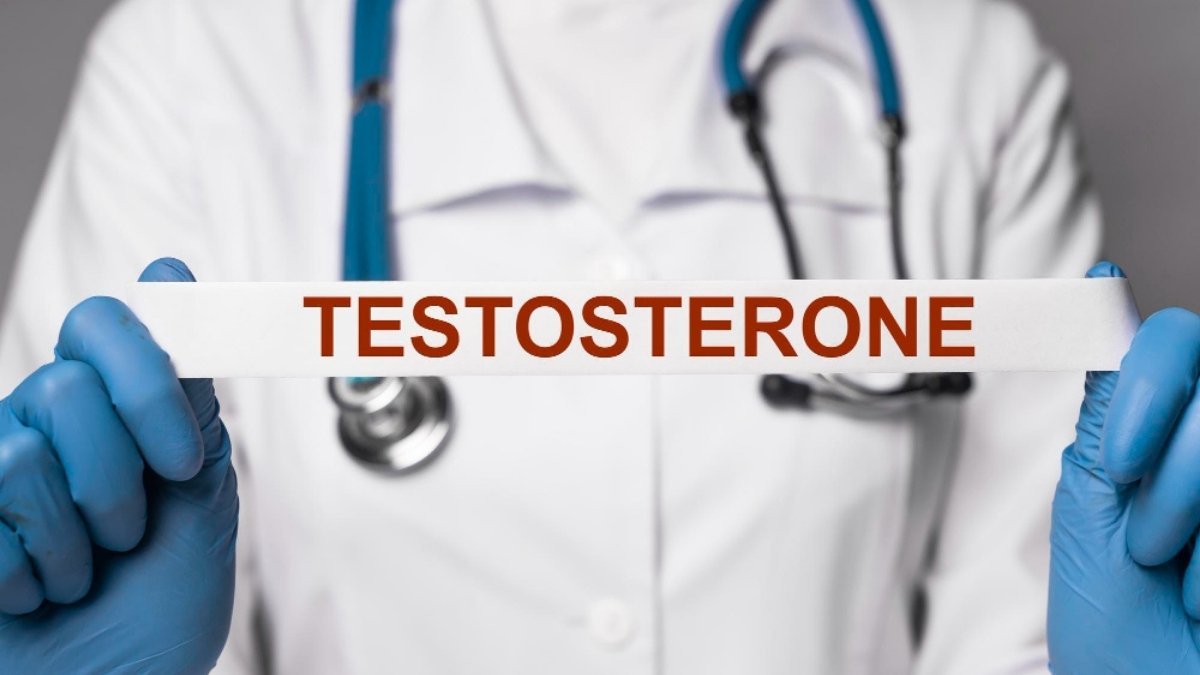
It’s both a direct and indirect game.
The biggest win is indirect: better sleep. The vast majority of your testosterone is produced while you’re in the deep, restorative stages of sleep. If your internal clock is out of whack, your sleep suffers. And when your sleep suffers, your testosterone tanks. One study found that just one week of sleeping only five hours a night dropped daytime testosterone levels in healthy young men by 10-15%. So, morning sun leads to better sleep, and better sleep leads to better testosterone. It’s a simple, powerful equation.
But there are more direct links, too. When sunlight (specifically UVB rays) hits your skin, it kicks off the production of Vitamin D. Vitamin D isn’t just a vitamin; it acts like a steroid hormone in your body, and it’s absolutely crucial for male reproductive health. Your testes—the T-factories themselves—are covered in Vitamin D receptors. Studies have consistently shown a strong link between higher Vitamin D levels and higher total and free testosterone. In one trial, overweight men who supplemented with Vitamin D for a year saw their total testosterone levels jump by about 25% compared to a placebo group.
And it gets even cooler. Some new research suggests there might be a direct “skin-brain-gonad axis.” Basically, UVB light on your skin can trigger a signal that travels to your brain, telling your pituitary gland to release more Luteinizing Hormone (LH). LH is the messenger hormone that tells your testes to get to work making testosterone.
So, Here’s the Play:
- When: As soon as you can after waking, within the first hour is ideal.8
- How Long: Aim for 5-10 minutes on a clear day. If it’s overcast, stretch that to 15-20 minutes. Some experts even say go for 30-45 minutes if you can.
- How: Get outside. Don’t wear sunglasses (regular glasses or contacts are fine).8 Let the light hit your eyes and expose some skin, like your arms and legs. And please, don’t stare directly at the sun. Just face in its general direction.
- Plan B: If it’s still dark out or the weather is terrible, turn on all the bright indoor lights you can. Then, make it a point to get outside for a bit as soon as the sun is up.
A quick note on safety: we’re talking about short, strategic exposure. This isn’t about getting a tan. The goal is to get the biological signal without increasing your risk of skin damage. Any sun exposure later in the day, especially during peak hours (10 a.m. to 4 p.m.), should be done with proper protection.
Win #2: You’re a Houseplant with Complicated Emotions. Water Yourself.
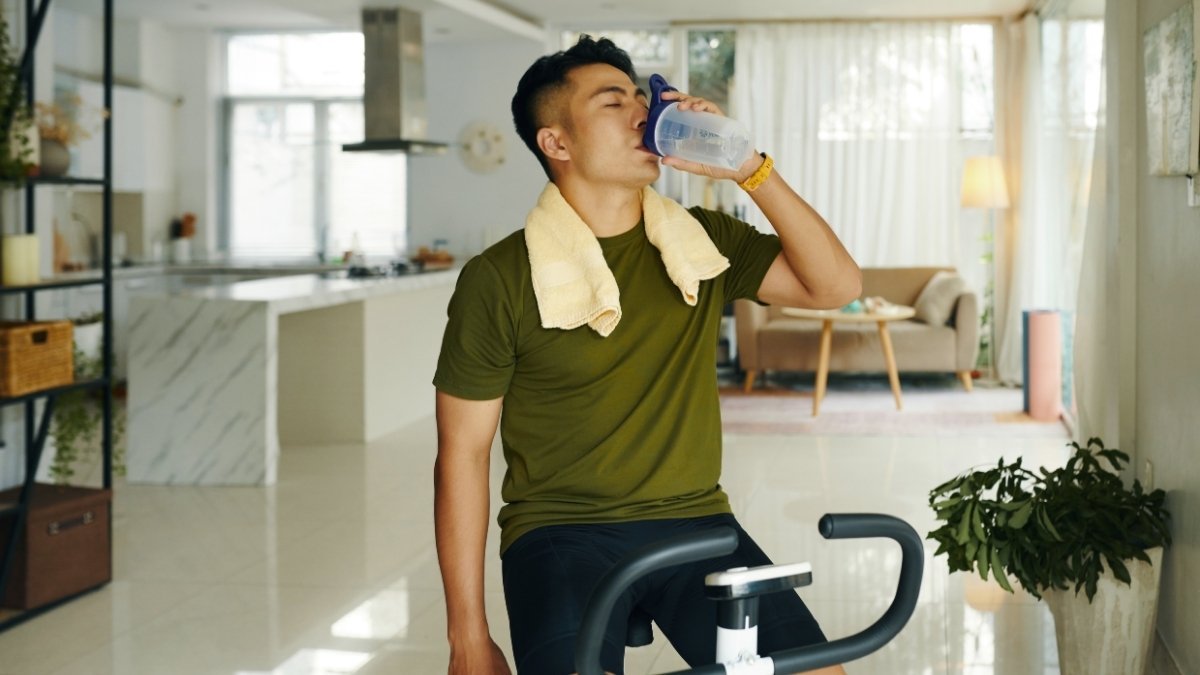
Think about it. You’ve just gone 7-9 hours without a single drop of water. Your body is naturally in a state of mild dehydration when you wake up.
This isn’t just about being thirsty. Your body interprets this dehydrated state as a low-level threat, a stressor. And what does your body do when it’s stressed? It pumps out cortisol. This immediately puts you in a catabolic (breakdown) state, which is the exact opposite of the anabolic (building) state you want for healthy testosterone levels.
The Dehydration-Stress Connection:
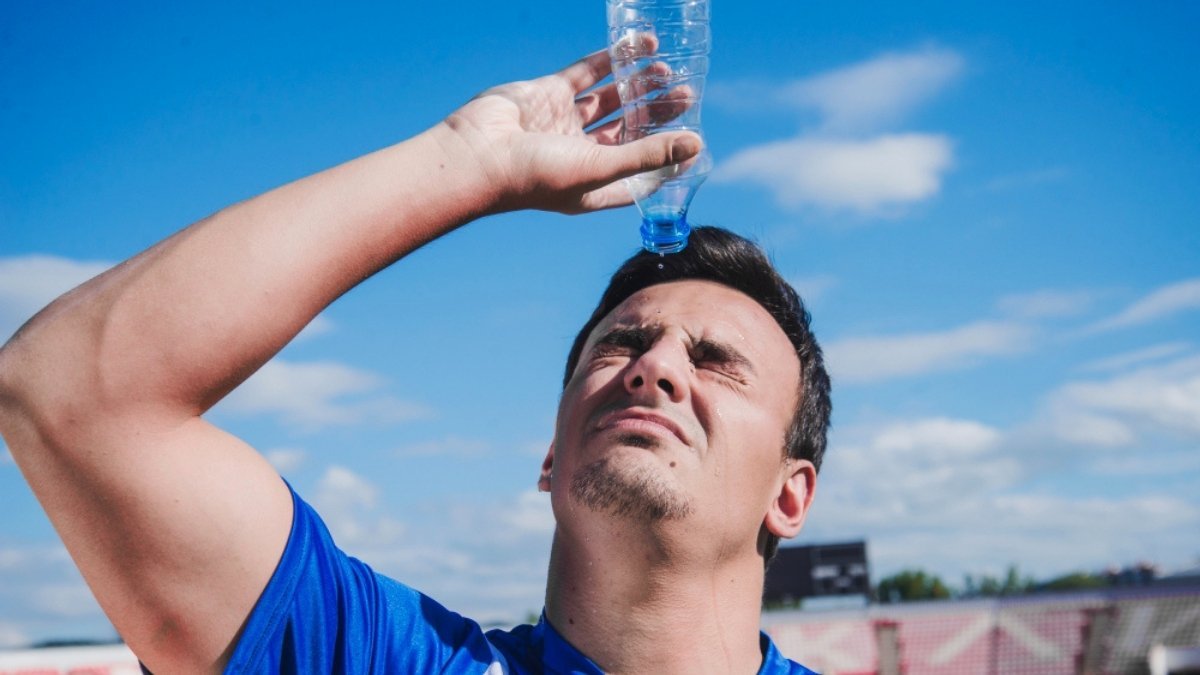
When you’re dehydrated, your blood gets a little more concentrated. Your brain has sensors that pick up on this and, in response, release a hormone called vasopressin (AVP). AVP’s main job is to tell your kidneys to hold onto water.
But here’s the crucial part: AVP also sends a signal to your pituitary gland to release another hormone (ACTH), which then travels to your adrenal glands and tells them to make cortisol. It’s a direct chain of command: dehydration → vasopressin → cortisol.
The science backs this up completely. Studies have shown a clear link between markers of dehydration and higher cortisol levels. One meta-analysis confirmed that being in a state of hypohydration (a fancy word for dehydrated) leads to a significant spike in cortisol. Even crazier, research shows that people who habitually drink less water have a much bigger cortisol spike when they face a stressful situation later in the day.
How This Crushes Your Testosterone:
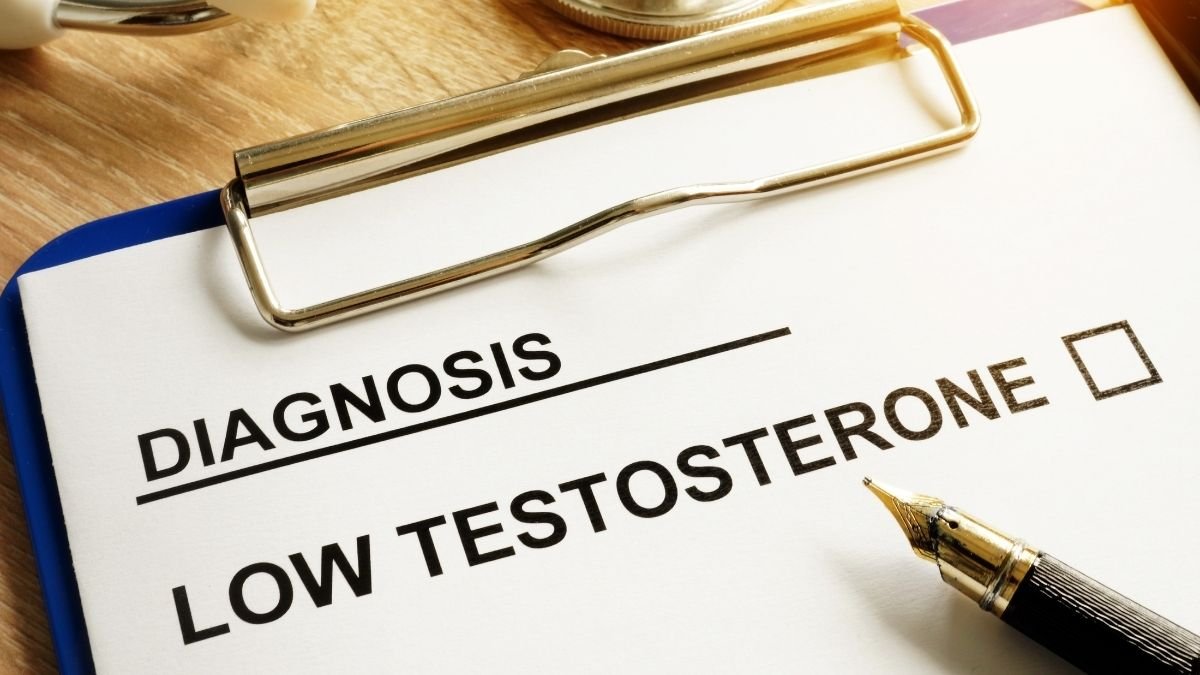
That morning cortisol spike from dehydration is bad news for your T levels.
As we’ve established, cortisol is testosterone’s enemy. It basically tells the command center in your brain to shut down the “make more testosterone” signal. When your body is focused on a perceived threat—even one as simple as not having enough water—it prioritizes survival functions over things like building muscle or reproduction.
Studies have directly linked dehydration to lower testosterone. One study on elite wrestlers found a strong negative correlation: the more dehydrated they were, the lower their total testosterone was. Another found that being dehydrated blunted the normal testosterone boost you get from exercise.
So, Here’s the Play:
- First Thing: Before your coffee, before anything else, drink a big glass of water. We’re talking 16 to 32 ounces (that’s about 0.5 to 1 liter) within the first hour of being awake.
- Add a Pinch of Salt: This is a pro-tip from neuroscientist Dr. Andrew Huberman. Adding a tiny pinch of sea salt or an electrolyte mix to your first glass helps your body absorb the water more effectively and replenishes minerals you lost overnight.
- Temperature Doesn’t Really Matter: Some people swear by warm water with lemon. If you like it, great. But the main goal here is just getting the fluid in. Don’t overthink it.
This isn’t just “drinking water.” It’s a strategic move to tell your body, “Hey, we’re not in a desert. You can stand down.” It cuts off that stress cascade at the source, keeping cortisol in check and creating a much friendlier environment for your testosterone to thrive.
Win #3: Delay Your Coffee. Yes, Really.
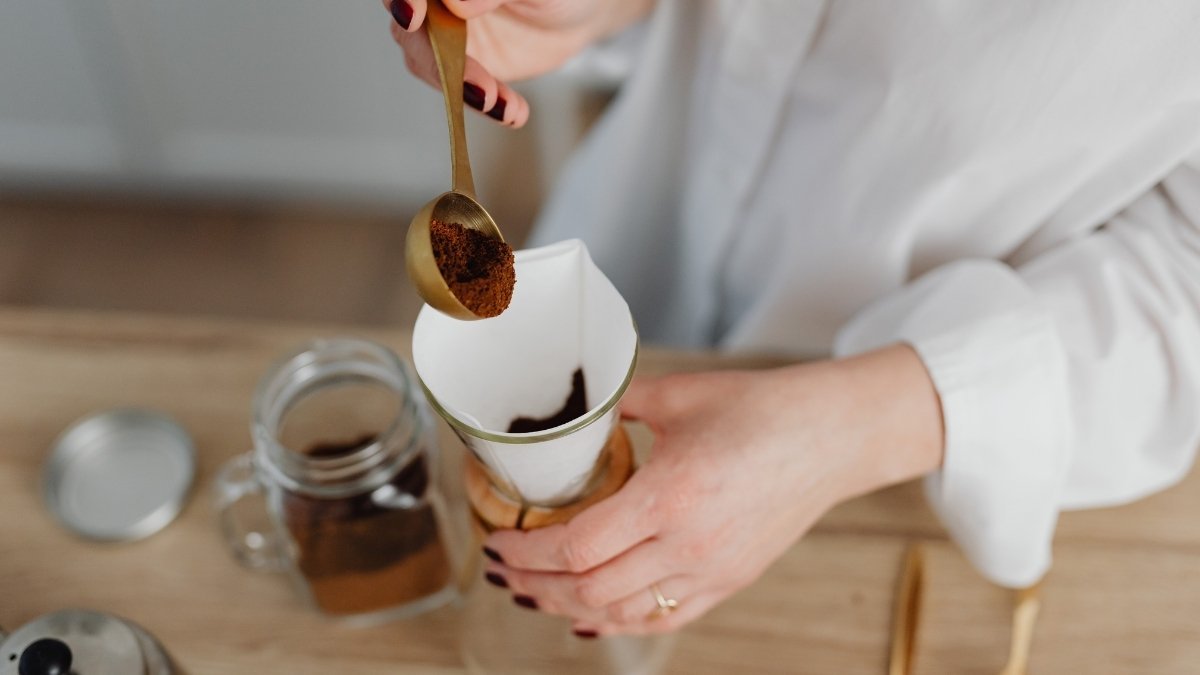
I know, I know. For many of us, the idea of waiting for that first cup of coffee sounds like a form of torture. But hear me out, because this small shift can completely change your energy game.
Your body already has its own natural, high-powered stimulant built in for the morning: that Cortisol Awakening Response (CAR). For the first 90-120 minutes after you wake up, your cortisol is peaking, making you naturally alert.
If you pour caffeine on top of that, you’re not really getting an extra boost. You’re just creating a traffic jam of stimulants. It’s redundant, and it can actually backfire.
The Science of the Stimulant Pile-Up:

Let’s quickly talk about adenosine. Think of it as “sleepiness dust.” It builds up in your brain all day, creating “sleep pressure.” When you sleep, your brain clears it all out. That morning cortisol spike helps sweep out any leftover dust.
Caffeine works by blocking the receptors for this adenosine. It doesn’t get rid of the dust; it just puts little plugs in the keyholes so the dust can’t get in and make you feel tired.
So, when you drink coffee immediately upon waking:
- You Build Tolerance: Your brain, feeling overstimulated by both natural cortisol and external caffeine, might start removing some of those adenosine receptors to balance things out. Over time, this means you need more and more caffeine to get the same effect.
- You Weaken Your Natural Wake-Up Signal: Some studies suggest that chronically chugging coffee first thing can actually blunt your body’s own morning cortisol peak. This creates a nasty cycle of dependency where you need the coffee just to feel normal.
- You Set Yourself Up for a Crash: If you drink caffeine before your body has naturally cleared out all of last night’s adenosine, you’re just masking the fatigue. The sleepiness dust is still there, waiting. As soon as the caffeine wears off, a few hours later, all that dust rushes into the now-open receptors, and you hit a massive energy wall.
That afternoon crash is what often leads to a second “rescue” cup of coffee. And since caffeine has a half-life of about 5-6 hours, that afternoon cup can still be messing with your sleep quality at 10 p.m., which, as we know, is when you’re supposed to be making testosterone for the next day.
See the vicious cycle?
So, Here’s the Play:
- The 90-Minute Rule: Wait 90 to 120 minutes after waking before you have any caffeine.
- Fill the Gap: Use that waiting period to do the other things on this list! Get your sunlight, drink your water with electrolytes, and do some light movement. These things naturally help you wake up and clear out that adenosine dust.
- The Workout Exception: If you’re doing an intense workout first thing in the morning, having some caffeine 30-60 minutes beforehand can actually improve your performance. But for general daily energy, the delay is king.
By doing this, you’re changing your relationship with caffeine. It stops being a crutch you need to feel human and becomes a strategic tool you use to extend your natural morning peak of energy well into the afternoon.
Win #4: Take a (Brief) Cold Shower
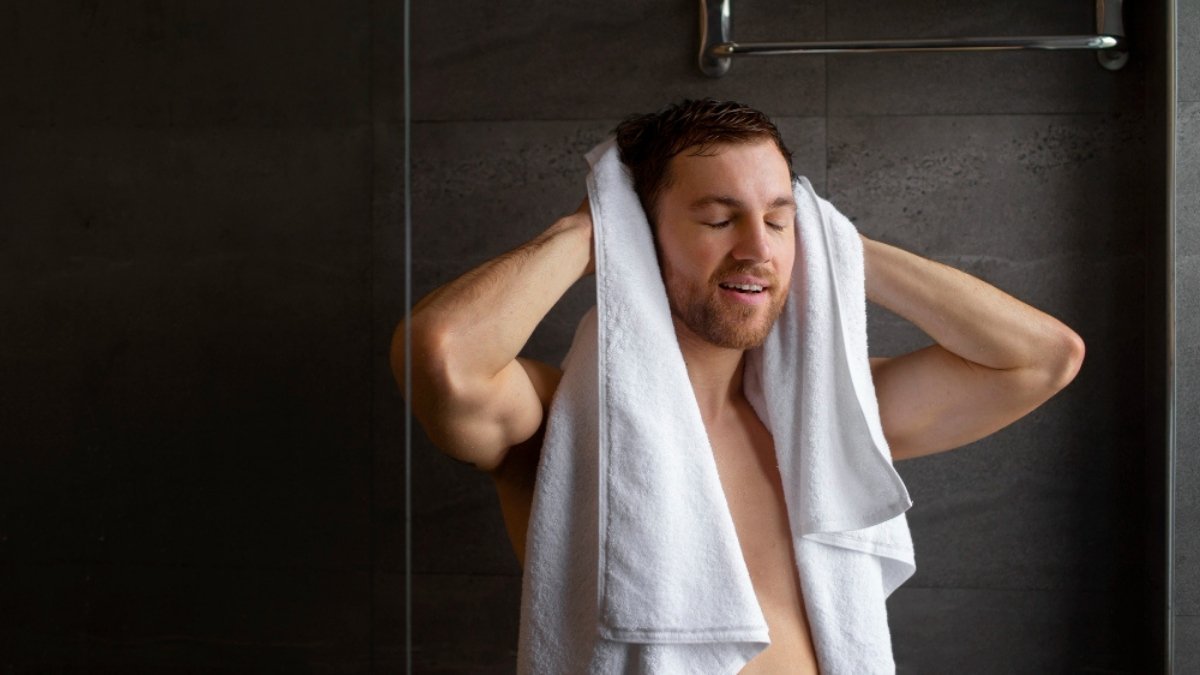
Okay, let’s talk about the one everyone loves to hate. The idea of a cold shower might make you want to crawl back under the covers, but the jolt it provides is more than just a wake-up call. It’s a powerful neurological reset.
Now, let’s clear something up right away. The internet is full of claims that cold showers are a magic bullet for boosting testosterone. The direct scientific evidence for that is, honestly, pretty weak. The real, proven benefit is what it does for your brain.
The Norepinephrine Surge:
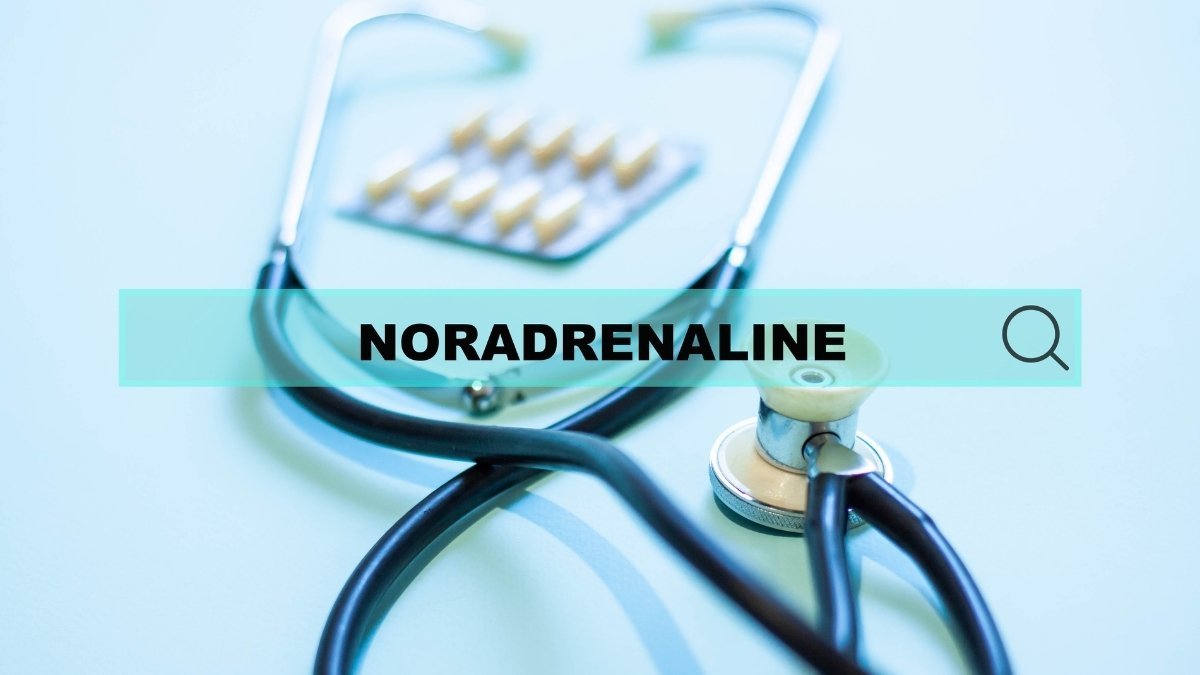
When that cold water hits you, your body has a mild “oh crap!” moment. This shock activates your sympathetic nervous system—your “fight-or-flight” response—in a controlled way. The main result is a massive release of a neurotransmitter called norepinephrine (also known as noradrenaline) into your brain and body.
Norepinephrine is like a laser beam for your focus. It jacks up your alertness, sharpens your concentration, and gives you that feeling of being ready for anything. That invigorating, energized feeling you get after a cold shower? That’s not testosterone; that’s norepinephrine. And it’s a fantastic way to start your day.
The Testosterone Question: It’s Complicated…
So, where does testosterone fit in? The connection is indirect and a bit controversial.
- No Direct Boost: As I said, there’s no solid proof that a quick cold shower spikes your T-levels. In fact, some studies on prolonged cold exposure showed it might even suppress the hormones that signal for testosterone production.
- The Post-Workout Problem: This is important. If you lift weights, taking a cold shower or ice bath immediately after your workout might actually be a bad idea. Research has shown that post-exercise cold water immersion can blunt the anabolic (muscle-building) response, including the temporary rise in free testosterone you get from lifting. It seems to interfere with the signals for muscle growth.
- The Long-Term Stress Benefit: The most likely way cold showers could help your testosterone is by improving your stress resilience over time. A 2024 meta-analysis found that while cold water immersion didn’t reduce stress immediately, it did lead to a significant reduction in stress markers 12 hours later. By training your body to handle this small, controlled stressor every morning, you might become less reactive to other stressors throughout the day. And less chronic stress means less cortisol, which is great news for your testosterone. But this is a long-term adaptation, not an instant fix.
So, Here’s the Play:
- Timing is Everything: To be safe, separate your cold exposure from your resistance training. Don’t hop in an ice bath right after squats. Take your cold shower on a non-training day, or at least several hours before or after you lift.
- Start Small: You don’t need to be a hero. Start with just 30 seconds at the end of your normal shower and work your way up to 2-3 minutes.
- Cold, Not Arctic: The water should be uncomfortably cold, but safe. The coldest setting on your shower is usually plenty.
Think of the cold shower as a tool for your brain first and your body second. The guaranteed win is the immediate, powerful boost in focus and alertness from norepinephrine. The potential long-term stress resilience is a nice bonus.
Win #5: Move Your Body and Send the Right Signal
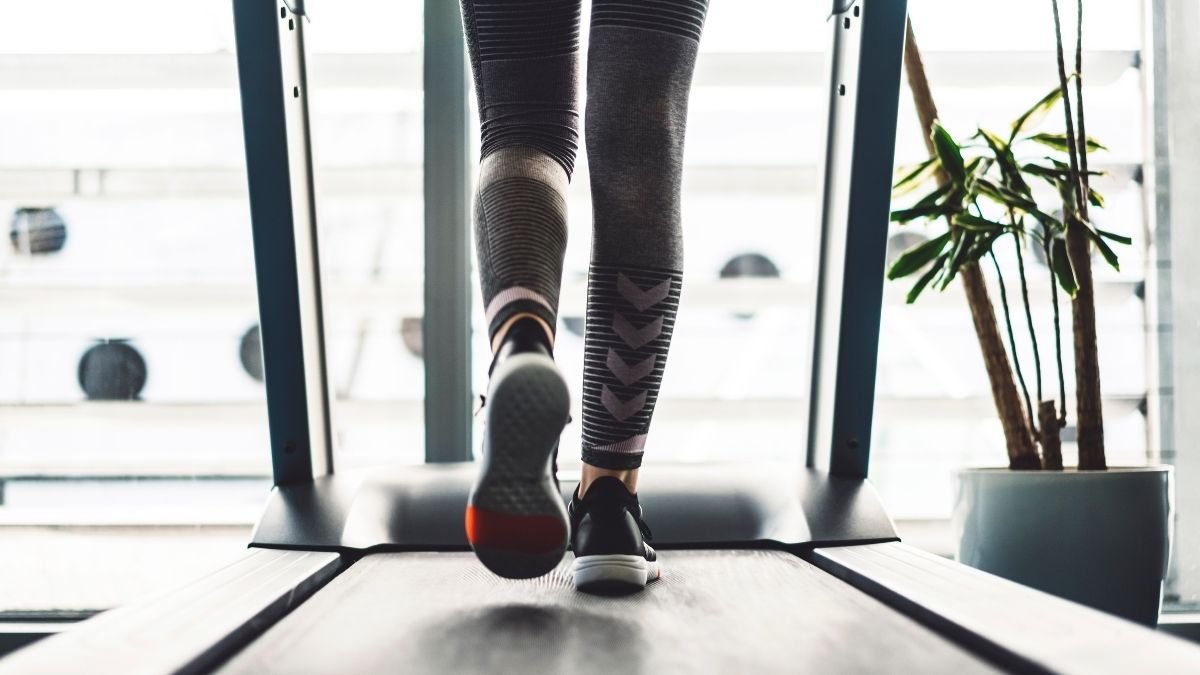
Morning movement is a powerful signal. It tells every cell in your body that the day of rest is over, and it’s time to start burning fuel and doing work. And when it comes to your hormones, exercise—especially the right kind—is one of the most potent triggers you have.
When you train, particularly with resistance or high intensity, your body responds by acutely increasing anabolic hormones like testosterone and human growth hormone (HGH) to help repair and build muscle.
Is Morning the Best Time to Train?

This is a hot topic. Here’s the breakdown:
- The Case for Morning: Your natural testosterone levels are at their absolute peak in the morning. The theory is that by working out during this window, you’re taking advantage of a more anabolic environment, potentially leading to better muscle growth. Plus, let’s be real: a workout done in the morning is a workout that doesn’t get skipped when your day goes sideways at 4 p.m.
- The Case for Afternoon: While your baseline testosterone is lower later in the day, some research suggests that the exercise-induced spike in testosterone might actually be bigger in the afternoon. Your body temperature and raw strength also tend to peak in the late afternoon, which could mean a higher-quality workout. One study even found that while both morning and evening lifters got stronger, the evening group saw slightly more muscle growth.
The Verdict? Consistency beats everything. While the afternoon might have a slight physiological edge, the habit-forming power of a morning workout is undeniable. A good workout you do consistently is infinitely better than a “perfect” workout you skip.
Not All Exercise Is Created Equal
Different types of training send different signals. Let’s break it down, because this really matters.
🏋️♂️ Hormonal Response to Different Exercise Modalities 🏃♀️
Resistance Training (Compound)
High-Intensity Interval Training (HIIT)
Aerobic Exercise (Moderate)
A 2021 study showed that an 8-week HIIT program led to a huge 36.7% rise in resting testosterone levels. And for resistance training, focusing on big, compound movements like squats, deadlifts, and bench presses gives you the most hormonal bang for your buck.
But don’t sleep on cardio. While it might not give you the same acute T-spike, its role in managing body fat is critical. Excess body fat, especially belly fat, is a testosterone killer because it contains an enzyme that converts your testosterone into estrogen. So, staying lean through cardio is a non-negotiable long-term strategy.
So, Here’s the Play:
- Lift Heavy Things: Prioritize resistance training for the most direct anabolic signal. Focus on those big compound lifts.
- Sprint When You’re Short on Time: A 15-minute HIIT session can be incredibly effective at stimulating a hormonal response.
- Don’t forget to Move Slowly: Weave in moderate cardio on other days. It’s your best defense against fat gain that can crush your T levels.
- Don’t Be a Hero: Overtraining is real. It leads to chronically high cortisol and lower testosterone, undoing all your hard work. Listen to your body. Rest is where you get stronger.
Win #6: Eat Like You’re Building Something (Because You Are)

After sleeping all night, your body is in a breakdown state. It’s hungry for raw materials. Your first meal of the day is your chance to flip the switch from catabolic (breaking down) to anabolic (building up).
The key? Protein. A lot of it. Aiming for at least 30 grams of protein in your first meal is a game-changer.
This does two incredibly important things. First, it gives your body the amino acid building blocks it needs to make hormones, neurotransmitters, and repair muscle. Second, and this is huge, it keeps your blood sugar stable.
The Blood Sugar Rollercoaster vs. The Protein Train:
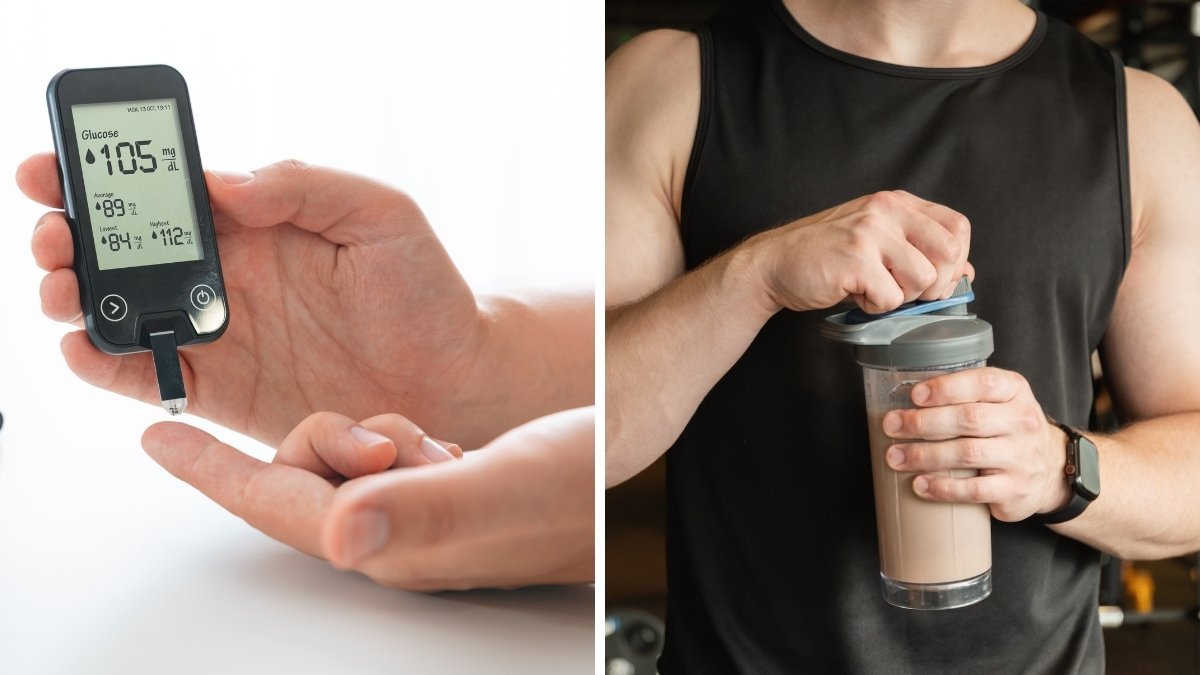
You know that mid-morning crash? That feeling of brain fog and sudden hunger that hits around 10:30 a.m.? That’s often the result of a breakfast high in carbs and sugar (think cereal, pastries, bagels, or even just juice).
That kind of meal sends your blood sugar skyrocketing. Your body panics and releases a flood of insulin to deal with all the sugar. Often, it overcorrects, causing your blood sugar to crash back down. Your body perceives this crash as another stressor and—you guessed it—releases cortisol to bring your blood sugar back up. This creates a volatile cycle of energy spikes and crashes, all fueled by cortisol.
Protein, on the other hand, is like a slow-burning log. It digests slowly, providing a steady, sustained release of energy and has a minimal effect on blood sugar. As clinical nutritionist Dr. Elena Ford says, “A protein-rich breakfast can support blood sugar stability, which is essential for mental clarity and avoiding mid-morning crashes”. By avoiding the rollercoaster, you avoid the reactive cortisol spikes, which give your testosterone room to breathe.
Protein is also the most satiating nutrient. It triggers the release of “fullness” hormones and suppresses the “hunger” hormone, ghrelin. Studies show that getting around 30 grams of protein at breakfast can keep you feeling full and satisfied well into the afternoon, making you less likely to reach for sugary snacks that will just restart the whole vicious cycle.
So, Here’s the Play:
- Hit the 30-Gram Target: Make it a non-negotiable. 30 grams of protein in your first meal.
- What Does 30 Grams Look Like?
- About 5 large eggs.
- 1.5 cups of plain Greek yogurt or 1 cup of cottage cheese.
- A smoothie with a scoop of high-quality protein powder.
- A 4-ounce serving of salmon or lean steak.
- Balance It Out: Don’t just eat a pile of meat. Add some fiber (veggies, whole grains) and healthy fats (avocado, nuts, seeds). This combo will keep you even more satisfied.
- Wait a Bit: Dr. Satchin Panda, a leading expert on circadian rhythms, suggests waiting at least an hour after waking to eat. This gives your digestive system time to fully “boot up”.
And please, don’t skip breakfast. Skipping your morning meal has been linked to higher “bad” cholesterol, insulin resistance, and even an 87% higher risk of death from cardiovascular disease. It throws your body into a stress state that’s terrible for your hormones and your arteries.
Win #7: Load Your Plate with T-Boosting Micronutrients
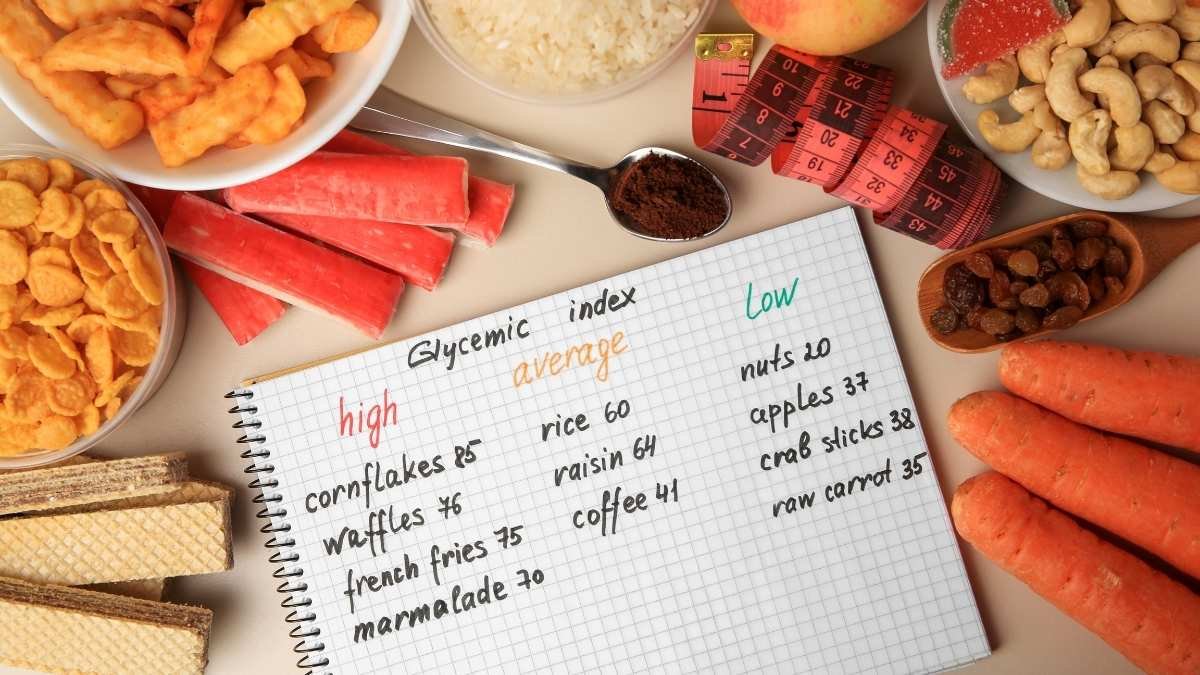
Okay, so we’ve got the 30 grams of protein covered. Now let’s get specific. Certain foods are like cheat codes for your hormonal machinery because they’re packed with the exact micronutrients your body needs to synthesize testosterone.
Think of it this way: protein is the lumber, but these foods are the specific nails, screws, and power tools you need to actually build the house.
Your Hormone-Hacking Grocery List:
- Whole Eggs (Yolks Included!): For years, we were told to fear the yolk. That was a mistake. Testosterone is a steroid hormone, and its fundamental building block is cholesterol. The yolk is where you find the healthy dietary cholesterol and fats that provide the raw material for hormone production. Plus, yolks are one of the few natural food sources of Vitamin D, which we already know is critical.
- Foods Rich in Zinc and Magnesium: These are the two most important minerals for male hormonal health.
- Zinc: Your body needs zinc to produce the signaling hormones that tell the testes to make testosterone. A zinc deficiency is directly linked to low T. It’s also lost through sweat, so if you’re active, you need to be extra mindful of your intake. Oysters are the king of zinc, but for breakfast, think beef, pumpkin seeds, or nuts. One study showed that men taking 30 milligrams of zinc per day saw an increase in their free testosterone.
- Magnesium: This mineral is involved in over 300 bodily processes. It helps in the conversion of Vitamin D to its active form and may also make testosterone more “bioavailable” by preventing it from getting locked up by another protein (SHBG). Load up on spinach, almonds, and cashews.
- Healthy Fats (Avocado, Nuts, Seeds): A diet rich in monounsaturated fats—the kind found in avocados, nuts, and olive oil—has been linked to better testosterone levels. These fats are essential for healthy cells and hormone signaling.
- Cruciferous Veggies (Broccoli, Cauliflower, Kale): It’s not just about making more testosterone; it’s also about managing its conversion into estrogen. These vegetables contain a compound called indole-3-carbinol (I3C), which helps your body process estrogen more efficiently, supporting a healthier testosterone-to-estrogen ratio.
- Onions and Garlic: These contain natural compounds that may help increase the hormones that stimulate your body to produce testosterone. Garlic also contains allicin, which some studies suggest can help lower cortisol—another indirect win.
So, Here’s the Play:
- The T-Boosting Omelet: This is my go-to. Scramble 3-4 whole eggs with chopped spinach, broccoli, onions, and garlic. Serve it with a side of sliced avocado and a sprinkle of pumpkin seeds.
- The Power Smoothie: If you’re in a rush, blend plain Greek yogurt, a scoop of protein powder, a big handful of spinach, a tablespoon of almond butter, and some berries.
- A Glass of Pomegranate Juice: Some research suggests that pomegranate juice can help lower cortisol and increase testosterone, all while improving your mood and blood pressure.
By being intentional with these ingredients, your breakfast stops being just a meal and becomes a targeted strategy to fuel your hormonal engine.
Win #8: Take 5 Minutes to Just… Breathe
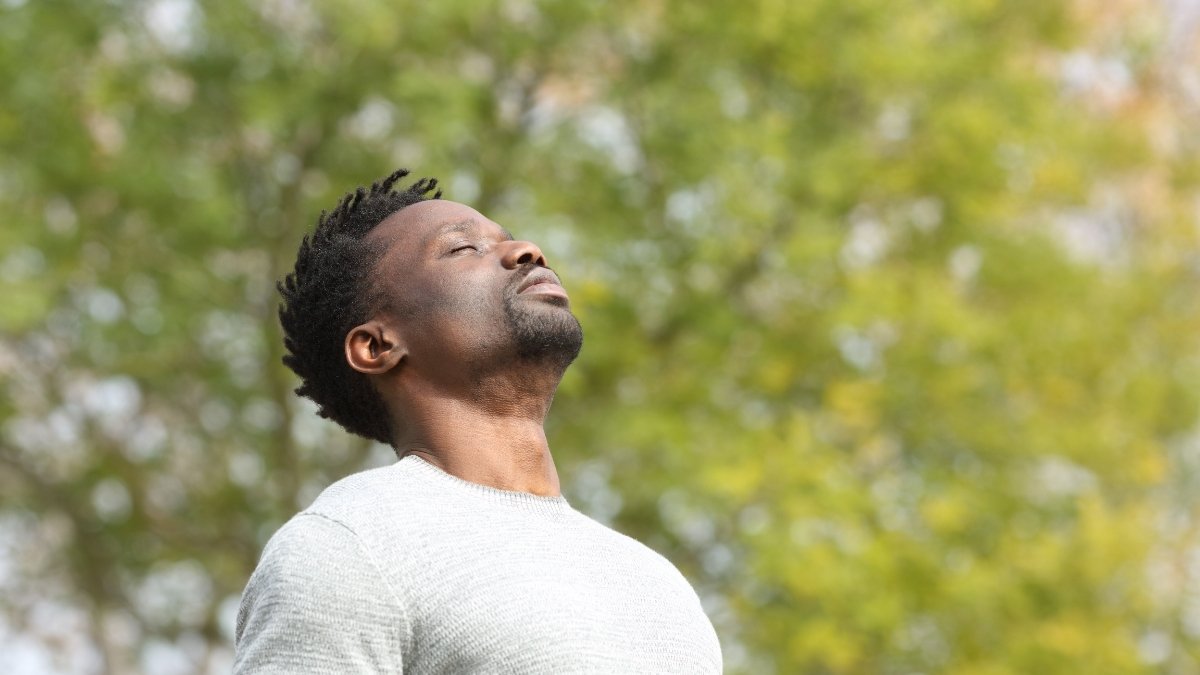
Let’s be blunt: chronic stress is the arch-nemesis of testosterone. When you’re constantly stressed, your body is flooded with cortisol, and as we’ve covered, cortisol puts a chokehold on your testosterone production.
One of the most powerful, scientifically-backed ways to fight back is with a simple, 5-10 minute mindfulness or meditation practice in the morning.
I know, “meditation” can sound a little out there. But you don’t have to sit on a cushion and chant. At its core, it’s just about taking a few minutes to focus on your breath and hit the reset button on your nervous system.
How a Few Deep Breaths Can Lower Your Stress Hormones:
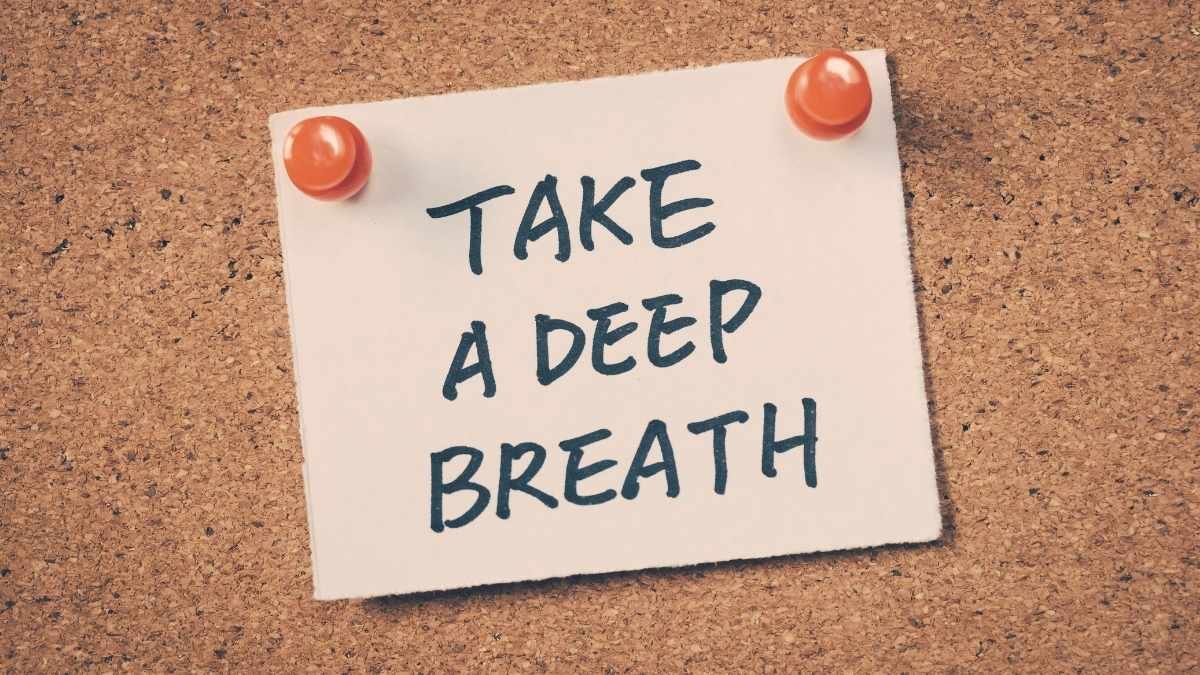
When your mind is racing—worrying about that big meeting, replaying an argument, stressing about your to-do list—your brain perceives it as a threat and activates the HPA axis, the system that releases cortisol. Mindfulness practice helps you break that cycle. By gently bringing your focus back to the present moment (the feeling of your breath, the sounds in the room), you train your brain not to get hijacked by every stressful thought.
The evidence for this is overwhelming.
- Multiple meta-analyses have confirmed that meditation significantly lowers physiological markers of stress, including cortisol.
- One study on medical students found that just a four-day mindfulness program led to a significant drop in their average morning cortisol levels, from 381.93 nmol/L down to 306.38 nmol/L.
- Another study found that four months of Transcendental Meditation practice significantly decreased both baseline cortisol and the cortisol spike people experienced during a stressful event.
Removing the “Cortisol Brake”:
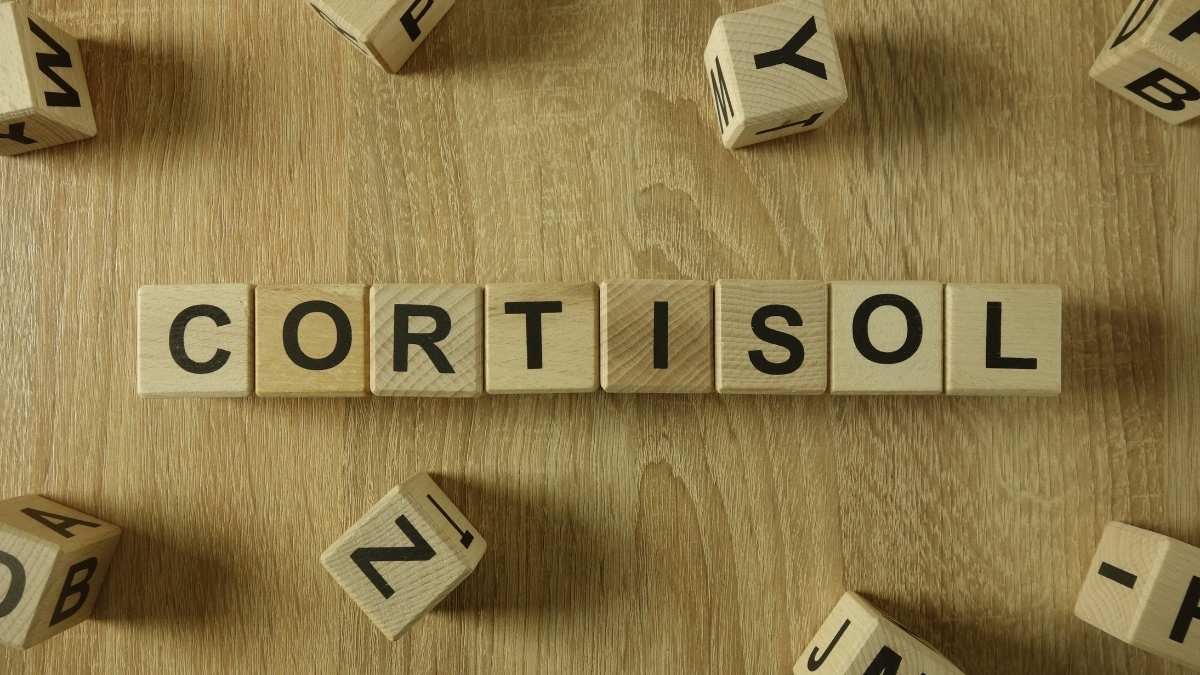
The main way this helps your testosterone is by taking cortisol’s foot off the brake. The “dual-hormone hypothesis” suggests that cortisol doesn’t just suppress testosterone production; it can also block its receptors, making the testosterone you do have less effective. By lowering cortisol, you’re creating a much more favorable environment for testosterone to do its job.
While some studies have shown mixed results on whether meditation directly boosts testosterone, a recent pilot study was fascinating. It found that after a stress test, a 20-minute mindfulness session resulted in higher testosterone levels compared to a group that just did a relaxation exercise. It seems to shift your hormonal response to stress in a more positive direction.
So, Here’s the Play:
- Start with 5 Minutes: Don’t try to be a monk on day one. Just set a timer for five minutes. Consistency is way more important than duration.
- Just Sit and Breathe: Find a quiet spot. Close your eyes. And just pay attention to your breath. Feel the air come in, feel it go out. That’s it.
- Your Mind Will Wander. Let it: Thoughts will pop up. That’s what minds do. Don’t fight them. Just notice them, and then gently guide your attention back to your breath. Every time you do this, it’s like a bicep curl for your focus muscle.
- Use an App: If you’re new to this, guided meditation apps like Calm or Headspace are fantastic. They’ll walk you through it step-by-step.
Win #9: Win the Day Before It Starts

You know that feeling of anxiety that comes from an unstructured day? A giant, overwhelming to-do list with no clear starting point? That feeling of being reactive, of constantly putting out fires instead of moving forward?
That’s a major source of stress. And that stress translates directly into cortisol.
Taking just five minutes in the morning to create a simple, strategic plan for your day is one of the most powerful anti-stress tools you have. It’s about creating a sense of order and control in a world that often feels chaotic.
How Planning Calms Your Brain:
When you write down a plan, you’re offloading the mental burden of trying to remember everything. You’re moving from a reactive state (“What’s next?!”) to a proactive one (“I know what’s next.”). This reduces cognitive load and the low-grade anxiety that comes with it. Studies consistently show that time management behaviors like planning and setting priorities are linked to reduced stress and burnout.
It also gives you a sense of control. Even if you only plan out two or three key things, you’ve asserted agency over your day. This feeling of control is a powerful psychological buffer against stress. When you feel like you have a handle on things, your brain is less likely to perceive your tasks as threats, and the cortisol response diminishes.
The hormonal impact here is all about preventing that slow, steady drip of cortisol that comes from a day of feeling overwhelmed and behind schedule. A planned day is a calmer day, and a calmer day is a better day for your testosterone.
So, Here’s the Play:
- 5-10 Minutes, That’s It: Grab a notebook or an app. Do this after your meditation or while you’re waiting for that 90-minute coffee timer to go off.
- Find Your “Big 3”: Don’t make a laundry list of 20 items. Identify the 1-3 most important things that, if you get them done, will make today a win. This is about focus, not volume.
- Block It Out: If you can, assign those big tasks to specific time blocks in your calendar. This is called time-blocking, and it eliminates the “what should I do now?” decision fatigue.
- Write It Down: The simple act of writing down your intentions makes you dramatically more likely to follow through. One study found that 91% of people who wrote down their goals ended up acting on them.
This isn’t just about productivity. It’s about proactively managing your stress response for the entire day.
Win #10: Kill the Snooze Button
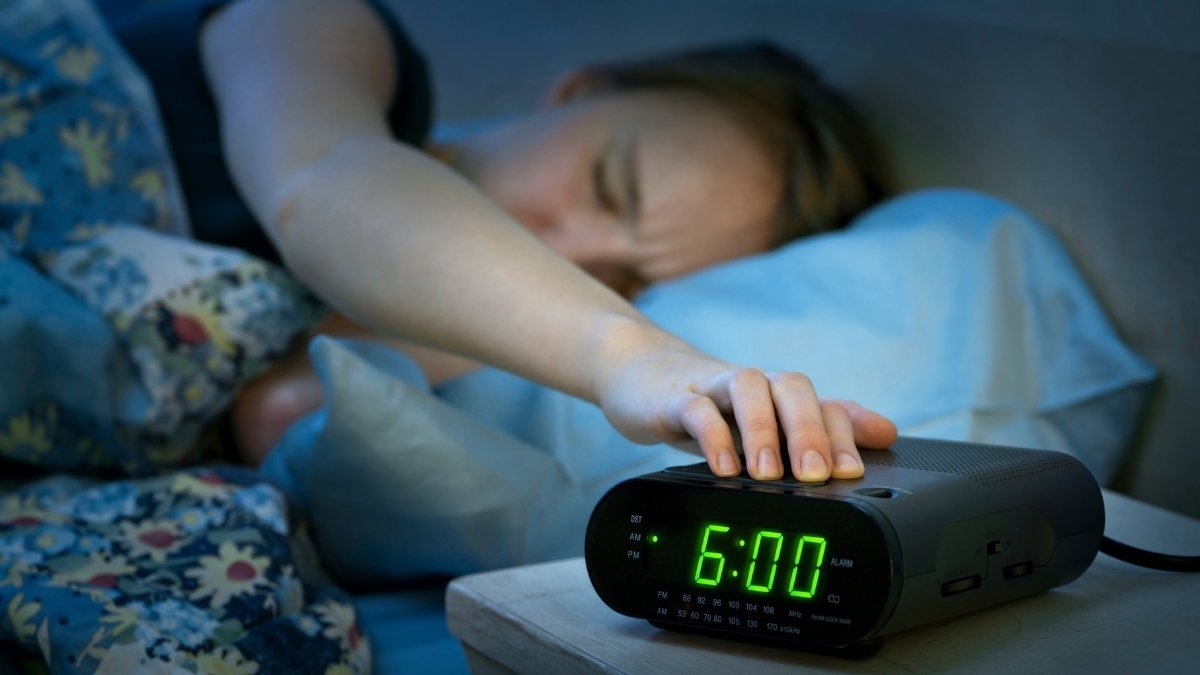
The snooze button feels so good, doesn’t it? Just nine more minutes…
But that little button is a saboteur. It’s actively messing with the delicate hormonal and neurological dance of waking up.
The Chaos of the Snooze Cycle:
In the hour or so before you naturally wake up, your body is already preparing. Your sleep gets lighter, your body temperature starts to rise, and your brain begins releasing wake-up hormones like cortisol. It’s a smooth, gradual ramp-up.
When your alarm goes off and you hit snooze, you slam the whole process into reverse.
You start to drift back to sleep, but it’s a light, fragmented, garbage-quality sleep. Then, nine minutes later, the alarm jolts you awake again, often from a deeper stage of this new sleep cycle, which is why you can feel even more tired than you did the first time.
This start-stop-start process completely confuses your body. That healthy, robust Cortisol Awakening Response gets blunted and smeared out over time, instead of being the sharp, clean signal it’s supposed to be.8 This is a major cause of “sleep inertia”—that feeling of being in a fog for the first hour of the day.
By killing the snooze button, you’re protecting the integrity of your body’s natural wake-up call. You’re allowing that cortisol spike to do its job properly, giving you the clean energy you need to tackle the other wins on this list.
So, Here’s the Play:
- The 5-Second Rule: This is from author Mel Robbins. The second your alarm goes off, mentally count down 5-4-3-2-1, and then physically move. Get your feet on the floor. It short-circuits the part of your brain that hesitates and makes excuses.
- Move Your Alarm: Put your phone or alarm clock across the room. Forcing yourself to physically get out of bed is half the battle.
- Address the Real Problem: Look, if you’re constantly smashing the snooze button, it’s a giant red flag that you’re simply not getting enough quality sleep. The real win isn’t just beating the button; it’s fixing your bedtime so you’re getting a solid 7-9 hours a night.
Win #11: Make Your Bed

This one sounds almost ridiculously simple. How can making your bed have any impact on your hormones?
It doesn’t, not directly. But it’s what psychologists call a “keystone habit.” It’s a small, simple win that sets off a chain reaction of other positive behaviors and mindsets.
The Psychology of the First Win:
As Admiral William H. McRaven famously said, “If you make your bed every morning, you will have accomplished the first task of the day. It will give you a small sense of pride and it will encourage you to do another task and another and another”.
That’s it. That’s the magic.
- It’s an Instant Accomplishment: You’ve started your day with a victory. It creates momentum.
- It Creates Order: You’re taking a small piece of your environment from chaos to order. This has a subtle but powerful effect on your mind, creating a sense of inner calm.
- It Reinforces Your Identity: Every time you do it, you’re casting a vote for being the kind of person who is disciplined, organized, and takes care of the details.
The hormonal benefit is the ripple effect. By starting your day with a sense of accomplishment and order, you subtly lower your background level of stress and anxiety. It’s one less piece of chaos in your life. And as we know by now, anything that chips away at chronic stress is a win for your testosterone.
So, Here’s the Play:
- Just Do It: The moment your feet hit the floor, take the 60 seconds it takes to make your bed.
- Don’t Think, Just Act: Make it as automatic as brushing your teeth. It’s a non-negotiable part of the morning.
A Few Tools to Help You Win the Morning
Changing habits is tough, and while none of these tools are magic bullets, they can make it a whole lot easier to stay consistent and get the job done. Think of them as helpful allies in your corner, designed to support the “wins” we’ve talked about.
1. A Light Therapy Lamp:
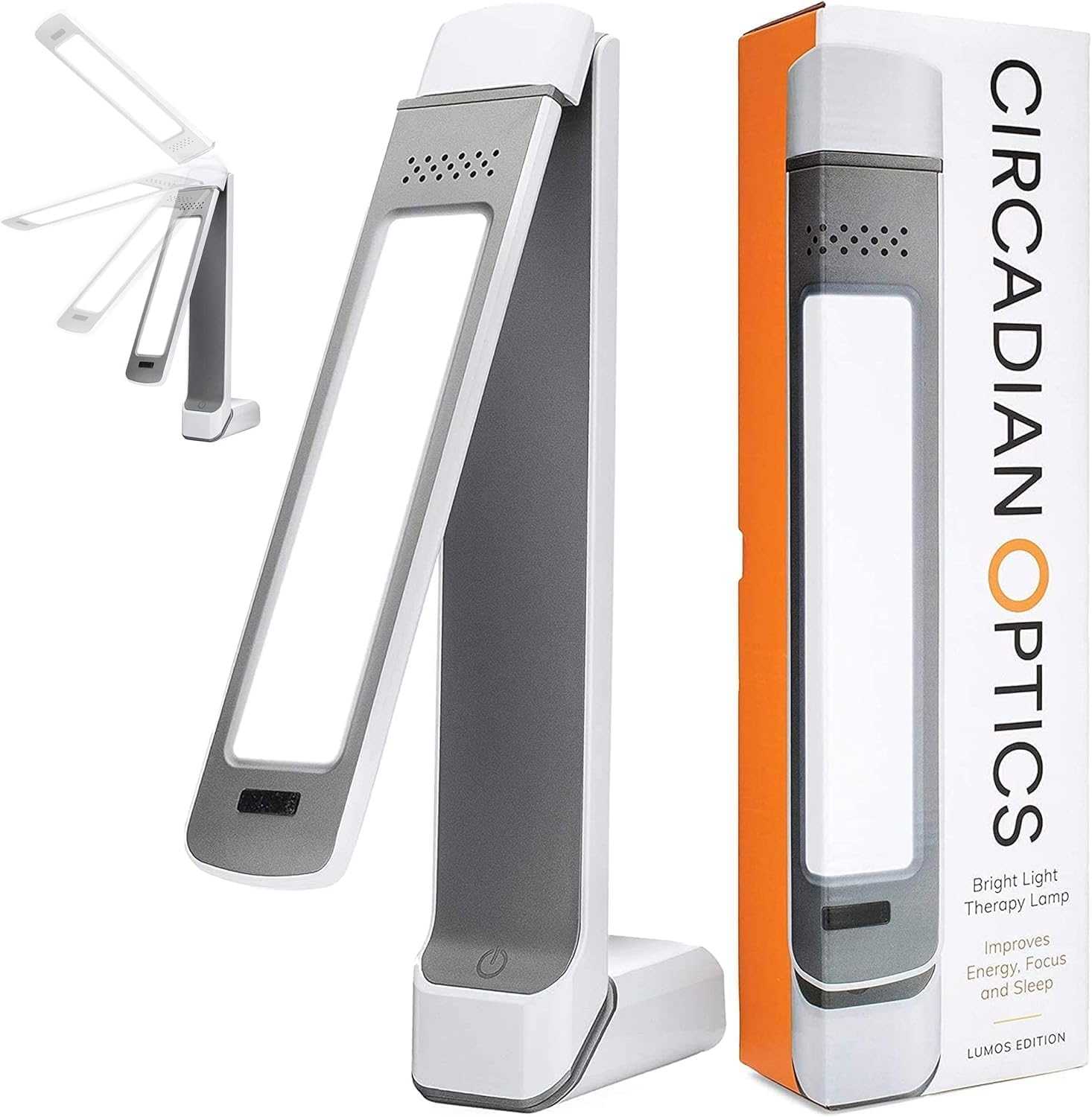
For those dark winter mornings or days when you just can’t get outside, a light therapy lamp is your best backup plan. It mimics the brightness of the sun to help kickstart that all-important circadian signal. The Verilux HappyLight Luxe is a popular and highly-rated option that delivers the recommended 10,000 lux to help you feel alert and energized, even when it’s gloomy outside.
2. A Quality Electrolyte Mix:

To supercharge your morning hydration, adding electrolytes is key. Instead of just a pinch of table salt, a dedicated mix can replenish a wider range of minerals. LMNT Recharge is a fantastic choice because it’s formulated with a high dose of sodium (1000mg) and zero sugar, which is perfect for that initial rehydration without spiking your blood sugar.
3. A Reliable Protein Powder:

Hitting that 30-gram protein target at breakfast can be a challenge, especially on busy mornings. A quality whey protein powder is one of the easiest ways to get there. Optimum Nutrition Gold Standard 100% Whey is a classic for a reason: it’s third-party tested, mixes well, and is a cost-effective way to add 24 grams of high-quality protein to a smoothie or a bowl of oatmeal.
4. A ZMA Supplement:

To ensure you’re getting enough of those two critical minerals, zinc and magnesium, a ZMA supplement can be a useful addition to your nighttime routine. These minerals are crucial for deep, restorative sleep, which is when your body does most of its hormone production. NOW Sports ZMA is a well-regarded, third-party certified option that provides a clinical dose of zinc, magnesium, and vitamin B6 to support recovery and sleep.
5. A Purpose-Driven Planner:

To nail Win #9 (Strategic Planning) and Win #8 (Mindfulness), a good planner is more than just a calendar. The Passion Planner is designed specifically to help you break down your long-term goals into daily actions. It includes space for weekly and daily focus, gratitude logging, and reflection, making it a powerful tool for reducing stress by creating clarity and intention.
Your Morning, Your Choice
Look, our modern world is practically designed to wreck male hormones. Chronic stress, bad sleep, terrible food, and a sedentary life all conspire to crank up cortisol and crush testosterone.
These 11 habits are your counter-attack. They’re not a random collection of tips; they’re a system designed to work together to manage that critical Testosterone-to-Cortisol ratio.
- Sunlight, Hydration, and No-Snooze set your body’s master clock.
- Movement and a High-Protein, Nutrient-Dense Breakfast send direct muscle-building, T-supporting signals.
- Delayed Caffeine, Mindfulness, Planning, and Making Your Bed are your stress-mitigation toolkit, designed to keep cortisol from running the show.
The power is in how they stack together. Sunlight makes it easier to wake up. Hydration and delayed caffeine give you smooth energy for a workout. The protein you eat after that workout refuels your muscles and stabilizes your energy for hours. And the mindfulness and planning keep your head clear so that daily stress doesn’t undo all the good work you’ve done. Don’t try to do all of this tomorrow. That’s a recipe for failure.
Just pick one. Maybe tomorrow, you can just focus on getting 10 minutes of sunlight. Or maybe you just delay your coffee. Or maybe you just drink a big glass of water with a pinch of salt.
Pick one small win. Nail it. Feel the difference. Then, when you’re ready, stack another one on top. This isn’t about a perfect morning. It’s about building a better one, one intentional habit at a time. Your energy, your drive, and your vitality are worth it.






